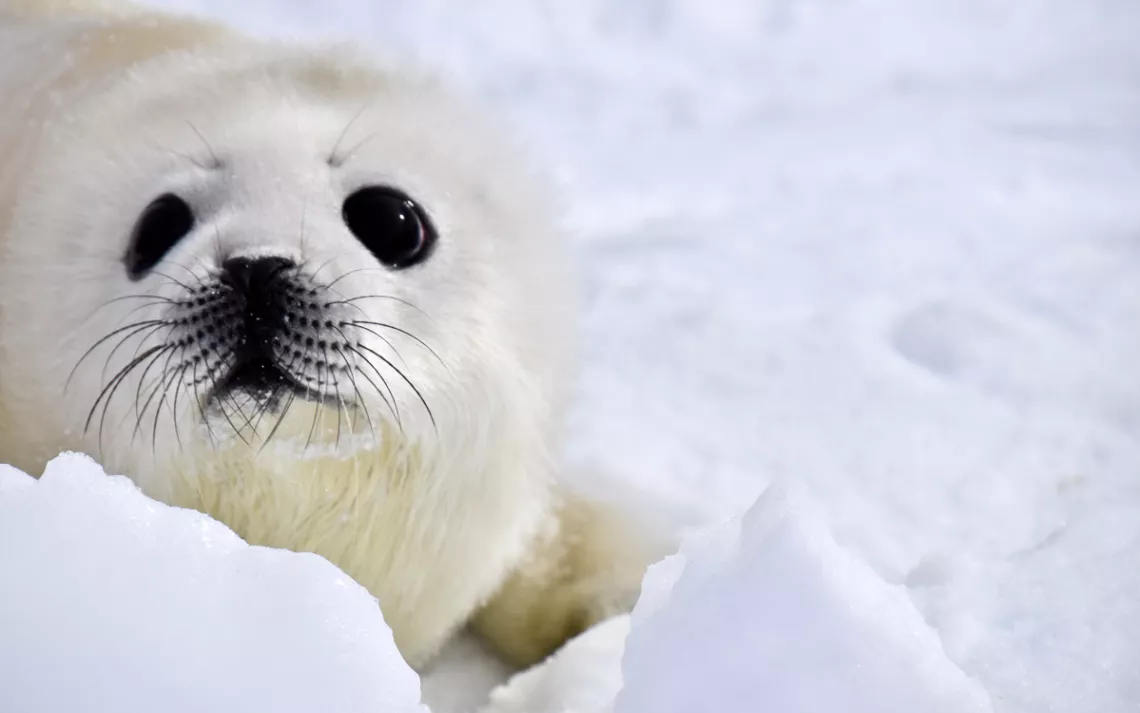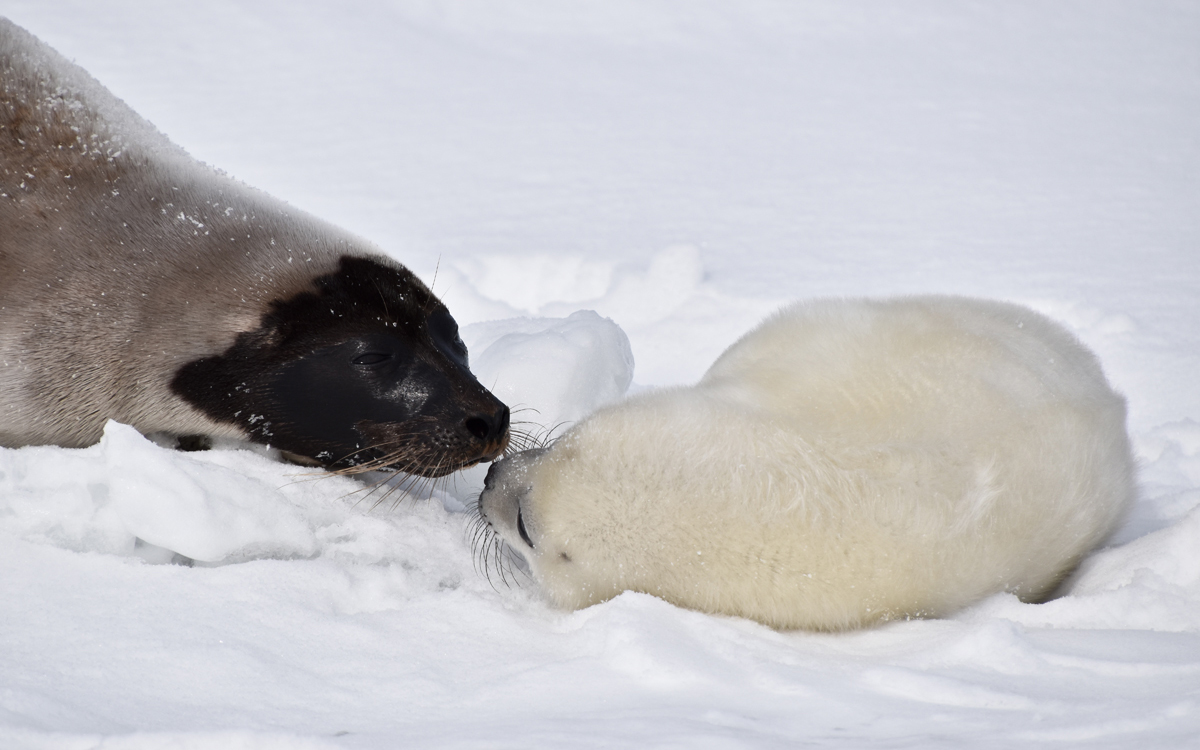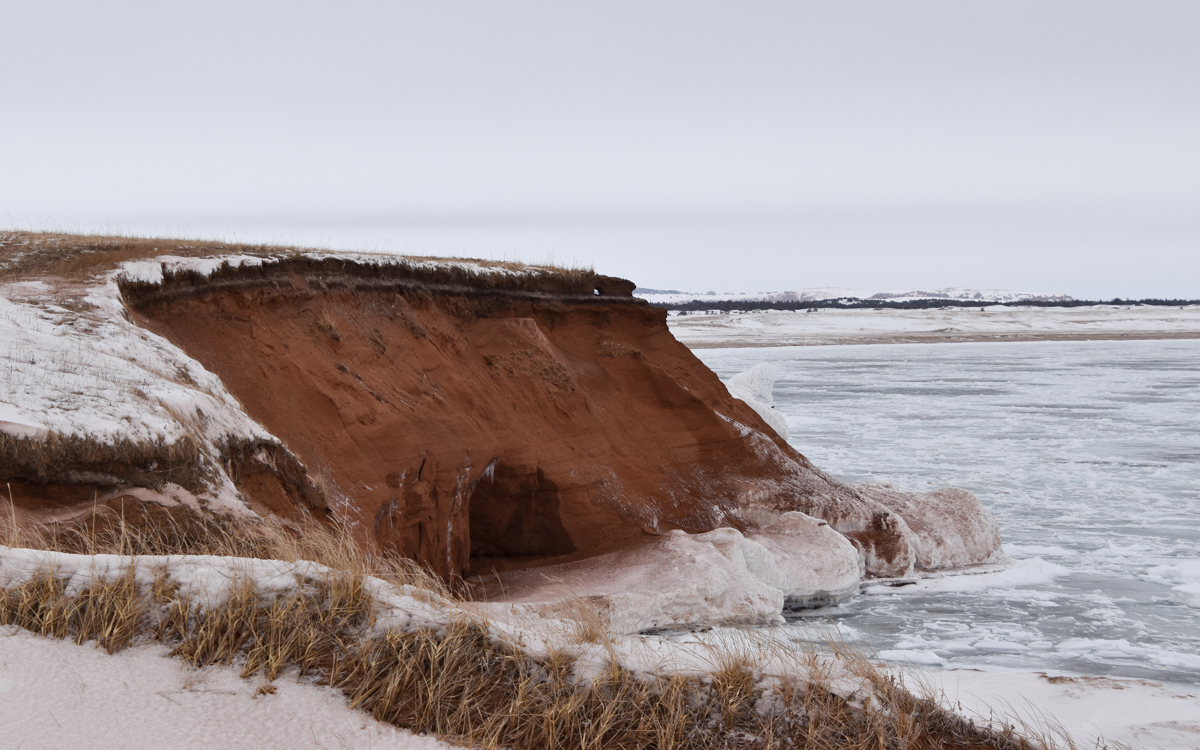A New Threat to Harp Seals
Seal pups aren't being clubbed anymore, but that doesn't mean they're safe

Baby harp seal on an ice floe | Photos by Brandon Withrow
Stuffed into the back of a helicopter and wearing a large, orange survival suit, I watched the fractured sea ice below pass like confetti. We were searching for harp seals on the stable ice floes in Canada’s Gulf of St. Lawrence—but those floes, and the seals who depend on them, are becoming harder to find.
The difficulty in reaching harp seals is not for lack of seal numbers. According to Canada’s Department of Fisheries and Oceans (DFO), they are 7.4 million strong in three population groups (Northwest Atlantic, Greenland Sea, and White Sea/Barents Sea). The problem is retreating ice resulting from warming waters. This ice loss affects both the seals, who pup on the ice to avoid predators, and the humans on Quebec’s Magdalen Islands, who rely on the ice for protection from winter storms.
Once we found some ice to land on, I followed a guide and a few vocal calls made by hungry pups to find a mother and white-coated pup huddled together. The pup watched us curiously with big black eyes before rolling on its back and touching nose to nose with its mother. The pups on the ice were still very young, with the fur of some still yellowed by amniotic fluid. After a few days, their coat whitens and then turns silver-gray. The mother-pup relationship is brief. The mothers nurse them for 12 to 14 days, losing about six pounds a day in the process, while the pups grow lush in blubber and double in size. After that, the mother leaves to mate again.

Mother and baby harp seals on an ice floe.

Erosion along the Magdalen Islands coast from Hurricane Dorian.
The Canadian government has banned commercial hunting of these vulnerable white pups since 1987 and established strict rules for tourist interaction. That helped to protect the population, but climate change brings new uncertainty to their future. Already the Magdalen archipelago is experiencing stronger storms like Hurricane Dorian, which tore away parts of the islands in 2019. And a diminishing ice barrier no longer protects against winter storms. One study shows that temperatures around the islands have “warmed 4.2 degrees Fahrenheit since the late 19th century, twice the global average.”
According to Marie Eve Giroux, director of Attention FragÎles, the loss of island coast has forced some people to move their houses. Significant erosion of sand dunes and cliffs has left roads and trails closer to the sea or otherwise damaged. Giroux's organization tracks the effects of climate change on the Magdalen Islands and works to restore erosion-damaged sand dunes by encouraging natural sand collectors and planting beachgrass.
For those who live on the archipelago, seals (along with salt mining) drive their economy. Due to the growing distance between the islands and the stable ice, seal hunters now have to travel farther north to find them. This growing physical distance between the islands and the ice where seals are pupping also affects seal tourism. On the islands, for example, Château Madelinot is the home base for a short window of safe seal observation, where the ice is still close and solid enough to fly in tourists. According to Ariane Bérubé, Château Madelinot’s marketing and communications director, the loss of sea ice in recent years resulted in several canceled tourism seasons.
That trend is certain to continue. “There will be an impact on the population,” says Garry Stenson, research scientist and head of the Marine Mammal Section for the DFO. The thinning and shrinking ice will mean that the “mortality of young [seals] is going up.”
And as the ice retreats, “the seals eventually start pupping further north.” Harp seals are resilient, Stenson notes, but this means that they will be entering into an unexplored territory: One new study shows that summer Arctic sea ice could be completely gone by 2034.
When we returned to the Magdalen Islands from our seal observation, there was a sense that there is a new normal developing. Life around the Gulf of St. Lawrence for both seals and humans is no longer about the hypotheticals of climate change. Warming waters, retreating ice, stronger storms, and crumbling islands are a stark unfortunate reality from which there is no going back.
 The Magazine of The Sierra Club
The Magazine of The Sierra Club



